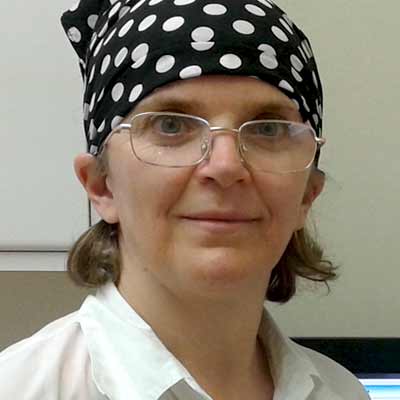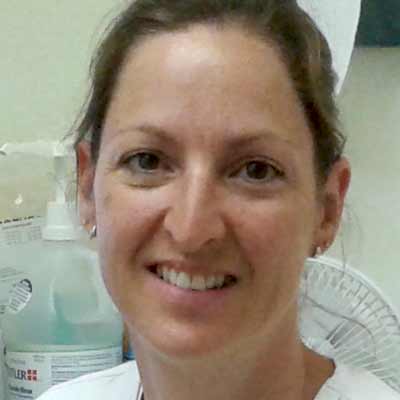
Dentist

Dental Receptionist

Dental Assistant

Dental Hygienist

Dental Hygienist
Our Waterloo region practice combines cutting edge equipment with a traditional approach to to provide a wide selection of family dental services.





Dr. Akkila’s Dental Clinic works diligently to fulfill all of your dental needs with the highest standard of professionalism and patient care. Our services include check-ups and cleanings, restorative dental work, crowns and bridges, periodontal therapy, root canal treatment, and wisdom teeth extractions.
We accept most dental insurance plans. Students of the U. of Waterloo, Laurier U., and Conestoga College are welcome. We will directly bill your insurance plan electronically, and you do not have to pay in advance. You only pay the co-payment, if any.
Mon, Tue, Wed, Thu. 10 am – 6 pm
Fri. 10 am – 4 pm.
160 University Ave West. – Unit #12, Waterloo, Ontario
Please contact me or email me if you have any inquiries.
Thank you kindly.
Waleed Akkila, DDS
Dental emergencies include trauma to the face and teeth, severe toothache, acute infection and swelling, and soft tissue hemorrhage. Other dental emergencies include lost fillings, crowns and bridges, tooth sensitivity and tooth fractures.
In case of trauma (impact accidents, contact sports, and blows to the face) the tooth may be completely knocked out of its socket. If the tooth is a permanent tooth place it in milk or a wet cloth, and see the nearest dentist within the first hour of that happening. Many teeth can be re-implanted with success if the procedure is followed properly and promptly. Our office will strive to see dental emergencies and emergencies as soon as possible. Call our office and rest assured you are in good hands.
If you have a dental emergency such as pain, swelling and/or infection, we will manage to see you the same day. Just walk in or contact us to inform us of your emergency.
Composite and Porcelain Veneers are a thin layer of either lab-processed porcelain (Indirect) or bonded composite restoration applied chairside (Direct). They cover the face side of teeth and are used mainly for the aesthetic enhancement of front teeth. Veneers can be used to cover severely discoloured teeth, those with malformations, are short or crooked. Veneers can also be applied to enhance the appearance of upper teeth and create a beautiful and attractive smile.
Crowns and bridges are fixed prosthetic restorations that cover the entire tooth surface (crown) or replace missing teeth by utilizing adjacent teeth as crown anchors (retainers). A crown is indicated when a tooth loses a large part of its structure due to decay and fracture and the filling cannot be adequately retained. It is also indicated following root canal treatment to reduce the chances of future tooth fracture.
A bridge is indicated as a fixed (non-removable) replacement of a missing tooth. The adjacent teeth (front and back of the missing tooth space) are used as retainers for the bridge structure. Crowns and bridges are made of porcelain, porcelain fused to metal or base/gold metal alloy, and permanently cemented in place. The dentist will advise you if such restoration type is recommended.
Bruxism is the involuntary clenching and/or grinding of teeth that happens typically during sleep. Clenching (gnawing) of teeth can also occur in the daytime. Habitual bruxism may well lead to worn-out or fractured teeth, broken fillings, teeth sensitivity (e.g. too cold), headache and temporomandibular (TMJ) disorder. Clenching and grinding of teeth is also associated with periodontal disease and sleep disorder. Symptoms are usually more prominent in the morning since habitual bruxism occurs during sleep. Mild or infrequent bruxism may occur and usually of mild or no consequences. No one knows for sure why people brux but it may be related to stress or irregular bite. Many people are unaware of their bruxism habit; however, telltale signs and symptoms to watch for are sore teeth, headache and tenderness, clicking jaw joints.
As a part of your oral examination, we will evaluate your TMJ, muscles of mastication, and teeth surfaces for signs of bruxism. almost all bruxers will benefit from wearing a nightguard custom-made to protect teeth and TMJ during sleep. Dietary modifications and jaw exercises may also be recommended in some cases.
Gingivitis is the infection and/or inflammation of gum tissue (gingiva) that is visible to the eye appearing as bleeding sore and reddish gum tissue. Periodontitis is the infection and inflammation of all tooth-supporting tissues (gingiva, alveolar bone and periodontal ligament) which gives rise to deep gingival pockets, tooth mobility, soreness and abscess formation. It is commonly chronic in nature and will progress to destroy the tooth-supporting tissues if not treated.
The affected teeth will eventually have to be extracted. The primary cause of gingivitis and periodontitis is bacterial plaque, a consequence of poor oral hygiene. Risk factors for gingivitis and periodontitis include smoking, diabetes, poor access to oral hygiene (e.g. tooth crowding, poorly fitted crowns and bridges) and bruxism (clenching and grinding).
Gingivitis is easy to treat and the gingival tissue returns to health rather fast following proper professional and home oral care. Periodontitis; However, requires more elaborate treatment to stop the progression of periodontal damage, eliminate symptoms and improve function. If you experience bleeding, puffy gums, loose teeth, or a bad taste in your mouth, you may have gum disease.
We will provide a professional assessment of your gums and other periodontal tissues and recommend the appropriate treatment and oral care measures. The non-surgical treatment of scaling and root planning will be carried out by our experienced hygienist or dentist, while referral to a periodontist will be made if the surgical approach is deemed necessary. Regular maintenance visits to the office are paramount for the continued care and the achievement of best results.
Endodontic Therapy. Each tooth has in its core a pulp space that contains the nerve and blood vessels required for tooth vitality. When pulp tissue is affected by tooth decay or fracture, the pulp becomes infected and inflamed and later degenerates and dies (necrosis). This process is very painful and can lead to swelling and infection spread to the bone and soft tissue.
Since, strictly speaking, the tooth does not need its pulp (nerve) for function, root canal therapy is recommended to save the tooth. The procedure is rather simple that the tooth is anesthetized and an access opening is cut into the tooth to access the infected pulp, which is then removed. The canal(s) is/are cleaned and shaped, then dried and filled with a special root canal filling material. The access opening is then restored following the removal of any decay present. Medications such as antibiotics and pain killers may be prescribed if indicated.
Wisdom teeth are the last molars to erupt behind the second molars in the four quadrants of the dental arches. They are commonly found impacted and unable to fully erupt because of a shortage of jaw space. Due to poor access for brushing and flossing, impacted wisdom teeth can lead to gum infection, swelling and pain (pericoronitis), as well as tooth decay. They may also be associated with front teeth crowding, bad breath and cheek biting. If wisdom teeth are impacted or malposed (crooked) and there has been a history of symptoms they are indicated for extraction. Properly erupted teeth that can be cleaned reasonably well may be retained by the patient.
The use of oral hygiene aid such as sulcabrush is highly recommended for cleaning around wisdom teeth. We will give you our expert opinion as to which course of action to take for your wisdom teeth. If it is time for wisdom teeth ( one or more) to be extracted we will provide you with the best care before, during, and after the extraction procedure is performed. Following the procedure, post-operative instructions will be explained and prescription medications ordered. A follow-up visit will also be scheduled 3 to 5 days afterwards to ensure the healing process goes smoothly.